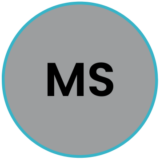Conference
AFH
June 15-16
Dijon, France
Salle Multiplex de l'uB
Meet Lunaphore
Join us in Dijon for the 2023 AFH conference.
Meet our scientists on site and discover our universal, end-to-end spatial biology solution, answering the needs of the scientific community from early discovery to late-stage translational and clinical research.
Our solutions allow you to minimize validation challenges and move fast from biomarker discovery to translational research.
Want to know more about our spatial biology solutions? Send us a message and secure a meeting with the team.
The AFH objective is to promote the flow of information and communication in all areas of histological technique through the organization of meetings and the publication of an annual journal.
Workshops
June 15 - 11:00 // June 15 - 14:00 // June 16 - 10:40
At Lunaphore booth
Multiplexing immunofluorescence imaging enables the analysis of the whole tissue microenvironment: the single cell resolution combined with spatial localization retrieves the information of cellular relationships and organization within the same morphological context. However, the complexity of the analysis, time-consuming optimization, and execution of staining protocols slow down the wide adoption of such a powerful research tool. This talk will introduce how the Lunaphore COMET™ integrates staining and imaging, to automate multiplex immunofluorescence assays using label-free antibodies.
Speaker

Alioune Ndoye, Ph.D.
Technical Sales Representative
Lunaphore Technologies
Poster Presentation
Poster #11
The process of cancer onset and progression is primarily regulated by two factors, the genetic/epigenetic changes in the malignant tumor cells and the alterations of the tumor microenvironment (TME) surrounding them. Tumor development is dynamic, cancer cells and the TME co-evolve with time, leading to spatial and temporal heterogeneity. The complexity of such crosstalk and cellular architectures is also responsible for inter-patient heterogeneity and different response to therapy. For the advancement of tumor treatment, therefore, the need for personalized medicine has emerged, which in turn requires a precise molecular profiling at the individual level. Spatially resolved profiles of RNAs and proteins are critical to understand how each cellular component is affecting tumor growth and responding to different therapies, providing key information for treatment opportunities. By means of new spatial proteomic approaches, a detailed mapping of the TME has been made possible, deciphering complex tissue samples at the single cell level.
The COMET™ platform is a microfluidic-based instrument that allows a fully automated sequential immunofluorescence protocol, including staining and imaging of tissue samples. Through its microfluidic technology and gentle incubations, it allows the rapid detection of up to 40 antigens on a single slide, therefore maximizing the information that can be retrieved per sample. COMET™ hyperplex immunofluorescence protocols can be run on multiple tissue types and are compatible with both formalin-fixed paraffin-embedded and frozen tissues.
Here, we show the development of hyperplex immuno-oncology panels with COMET™. Markers were validated on tumor microarrays and positive control tissues like lymphoid organs, on which we demonstrated the possibility to perform a 40-plex staining with COMET™. Further analysis on frozen sections of human tumors showed that selected panels with biomarkers of interest can be run on tissues of choice, displaying COMET™ value in the process of immunophenotyping and for the comprehension of the TME.
Speaker

Marylou Sandri
Sales Development Representative
Lunaphore Technologies